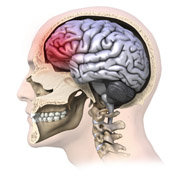Research and Innovation, UNL Office of

Center for Brain, Biology, and Behavior: Faculty Publications
ORCID IDs
Douglas J Wiebe http://orcid.org/0000-0002-6434-8693
Abigail C Bretzin http://orcid.org/0000-0003-3730-2849
Bernadette A D’Alonzo http://orcid.org/0000-0002-3760-2158
Document Type
Article
Date of this Version
2022
Citation
Wiebe DJ, Bretzin AC, D’Alonzo BA, et al. Br J Sports Med Epub ahead of print: [May 2022].
doi:10.1136/ bjsports-2021-104451
Abstract
Objective To examine the progression of collegiate student athletes through five stages of a return-to- activity protocol following sport-related concussion (SRC).
Methods In a multisite prospective cohort study, we identified the frequency of initial 24–48 hours physical and cognitive rest, and the sequence of (1) symptom resolution and return to (2) exertion activity, (3) limited sport, (4) full sport and (5) full academics. In resulting profiles we estimated the likelihood of return to full sport ≤14 days or prolonged >28 days and tested for variability based on timing of the stages.
Results Among 1715 athletes with SRC (31.6% females), 67.9% had 24–48 hours initial physical and cognitive rest. The median was 6 days to return to full academics, 8 days to symptom resolution and 9 days to exertion. Three profiles emerged; all had the same sport-specific return progression, but varied in the relative timing of full academics. In unadjusted analyses, full academics as the first stage corresponded to the longest time to return to full sport, and initiating exertion the same day as symptom resolution resulted in the shortest time. In adjusted regression analyses, athletes initiating full academics while still symptomatic were 21.5% less likely (95% CI −27.4% to −15.5%) to return to full sport ≤14 days and, analogously, 19.1% more likely (95% CI 13.4% to 24.7%) to have prolonged return >28 days. While additionally controlling for initial rest, sex, symptom count and concussion history, the likelihood of prolonged return >28 days was 37.0% (95% CI 25.2% to 48.8%) in athletes initiating exertion considerably before symptoms resolved (ie, 7+ days), but only 3.6% (95% CI −1.4% to 8.6%) in athletes initiating exertion shortly before achieving symptom resolution (ie, 3–4 days).
Conclusion We found evidence that sequential progressions were consistent with current recommendations including brief initial rest, and the initiation and relative timing of each stage impacted the final return-to- sport outcome.
Included in
Behavior and Behavior Mechanisms Commons, Nervous System Commons, Other Analytical, Diagnostic and Therapeutic Techniques and Equipment Commons, Other Neuroscience and Neurobiology Commons, Other Psychiatry and Psychology Commons, Rehabilitation and Therapy Commons, Sports Sciences Commons


Comments
© Authors 2022. Re-use permitted under CC BY. Published by BMJ.